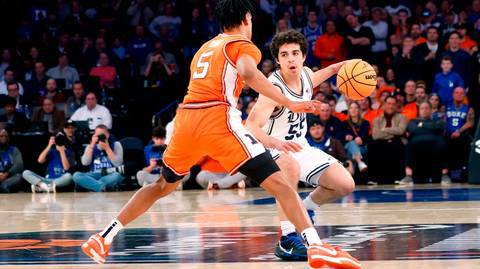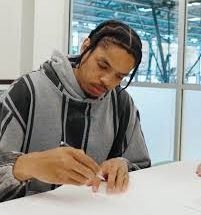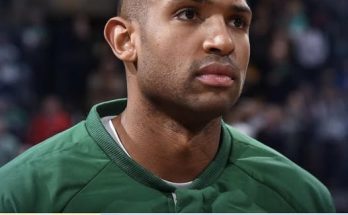In the history of college basketball, height has often been considered a defining factor in a team’s dominance on the court. Duke University, a powerhouse in the NCAA, has frequently fielded some of the most well-rounded rosters, but an unusual dynamic has emerged in recent years: the presence of a remarkably short player among a roster filled with towering athletes. The contrast between this player’s height and his teammates’ formidable stature has ignited discussions on the impact of skill, determination, and strategy beyond physical attributes.
Basketball is often seen as a game of giants, where height grants an immediate advantage in rebounding, shot-blocking, and overall court presence. Duke, known for its ability to recruit and develop top-tier talent, has traditionally focused on acquiring players who fit the physical mold of elite basketball prospects. However, the shortest player on the roster has defied conventional wisdom, proving that agility, vision, and mental sharpness can rival pure physicality. This player has not only secured his place on the team but has also emerged as a pivotal figure in its success, leveraging his skills in ways that his taller teammates cannot.
One of the most significant aspects of his impact lies in his speed and ball-handling ability. While taller players excel in rim protection and post-play, they often lack the agility required to keep up with smaller, quicker guards. This player capitalizes on that weakness, using his quickness to navigate through defenses, penetrate the lane, and create scoring opportunities. His ability to handle the ball with precision allows him to dictate the pace of the game, forcing opposing teams to adjust their defensive schemes to counter his movements. This, in turn, opens up space for his teammates, allowing Duke to maximize its offensive strategies.
Beyond his individual skills, the shortest player on the team serves as a catalyst for the team’s overall chemistry and cohesion. His presence forces his teammates to adapt their playing styles, ensuring that they are not overly reliant on size but rather on a blend of height and skill. His ability to read the floor and distribute the ball effectively enhances the team’s offensive efficiency. With precise passing and an intuitive understanding of the game, he becomes the orchestrator of plays, often setting up taller teammates for easy baskets. This dynamic creates a balanced attack that makes Duke an unpredictable and dangerous opponent.
The defensive impact of this player cannot be overlooked. Despite being shorter than his peers, he compensates with relentless energy, quick hands, and a high basketball IQ. His low center of gravity allows him to stay in front of taller, often less agile opponents, making him a formidable perimeter defender. His quick reflexes enable him to disrupt passing lanes, generate steals, and initiate fast breaks, creating instant scoring opportunities. Additionally, his ability to apply full-court pressure keeps opposing guards on edge, limiting their ability to comfortably execute their offensive sets. His defensive tenacity proves that height is not always the most important factor in stopping an opponent; rather, anticipation and effort play crucial roles in disrupting the flow of a game.
Moreover, his resilience and work ethic serve as an inspiration to his teammates. In a sport where size often dictates opportunity, his ability to carve out a role on one of the most competitive teams in college basketball is a testament to determination and perseverance. His presence sends a powerful message about the value of grit and hard work, reinforcing a culture of relentless effort within the team. Teammates take notice of his intensity during practice, his commitment to refining his craft, and his refusal to be intimidated by the height disparity. This mentality becomes infectious, fostering an environment where every player is motivated to push their limits regardless of their natural physical advantages.
The coaching staff at Duke has also recognized the strategic advantages that come with having a shorter player in the lineup. They have adjusted their game plans to exploit his strengths, integrating fast-paced offensive sets that capitalize on his speed and playmaking ability. By doing so, they create mismatches that force opponents to make difficult defensive decisions. The contrast between his skill set and the towering presence of his teammates creates a dynamic that is difficult to counter. Defenders who focus too much on shutting down Duke’s taller players often find themselves struggling to contain the smaller guard, who thrives in moments of defensive lapses.
Another overlooked impact of this player is his ability to stretch defenses. While many teams anticipate that Duke’s offense will revolve around post play and inside scoring due to their tall lineup, his presence adds a new dimension. He is often an exceptional perimeter shooter, capable of knocking down three-pointers with consistency. His ability to space the floor forces defenders to extend beyond their comfort zones, thereby creating gaps in the defense that Duke’s taller players can exploit. This outside shooting ability complements the team’s offensive strategy, ensuring that they are not one-dimensional in their approach.
The psychological aspect of his role on the team also cannot be ignored. Opposing teams often underestimate him due to his height, assuming that he will be a liability on the court. However, time and again, he has shattered those assumptions by outplaying taller, more physically imposing opponents. This underdog mentality fuels his competitive drive and adds an element of unpredictability to Duke’s game plan. His ability to rise to the occasion in crucial moments, whether through clutch shooting, key assists, or defensive stops, makes him an invaluable asset to the team.
Furthermore, his ability to execute in pressure situations provides Duke with a crucial advantage. Shorter players often develop a heightened sense of situational awareness, knowing that they must compensate for their lack of height with smarter decision-making. This player has repeatedly demonstrated his ability to stay composed under pressure, making critical plays when the game is on the line. His confidence in these moments not only bolsters his own performance but also instills trust in his teammates, fostering a sense of reliability and composure within the team.
The broader impact of his presence on the team extends beyond Duke’s immediate success. His journey serves as an inspiration to aspiring basketball players who may not fit the traditional mold of an elite athlete. In a sport that often prioritizes height and physical attributes, his achievements highlight the importance of skill development, intelligence, and perseverance. Young athletes watching him play recognize that success is not limited to those with towering frames but is attainable through relentless effort and mastery of the fundamentals.
His story also challenges long-held perceptions within the basketball community. While height will always remain a valuable asset in the sport, his contributions emphasize that basketball is ultimately a game of skill, strategy, and execution. The impact of a shorter player on a historically tall team like Duke underscores the evolving nature of the sport, where adaptability and versatility are just as crucial as physical advantages. This shift in perspective may influence future recruitment strategies, encouraging coaches to look beyond height and evaluate players based on their complete skill set.
the shortest player on Duke’s tallest team has had an undeniable impact on both the program and the broader landscape of college basketball. His presence has redefined traditional notions of success in the sport, proving that skill, determination, and intelligence can rival pure physicality. By excelling in key areas such as speed, ball-handling, defense, and leadership, he has carved out an essential role within a team known for its towering athletes. His contributions extend beyond statistics, inspiring teammates and aspiring players alike to embrace the mindset that success in basketball is not solely determined by height, but by the ability to maximize one’s strengths and outthink the competition. As he continues to thrive in a league dominated by taller players, his legacy will serve as a reminder that the game of basketball rewards those who possess the heart, skill, and resilience to overcome perceived limitations.



